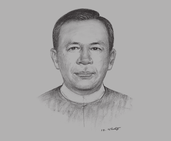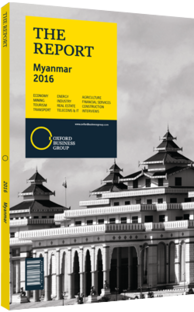Dr Kan Zaw, Minister of National Planning and Economic Development: Interview

Interview: Dr Kan Zaw
How would you assess the development of infrastructure capacity since 2011? What projects are under way to ensure economic evolution?
DR KAN ZAW: Physical and social infrastructure is a top priority. Myanmar is strengthening its economy by constructing more roads and expanding physical infrastructure for telecommunications, electricity and airports, as well as social infrastructure such as schools, high schools, colleges, hospitals and rural health centres. All of these projects are in line with the objectives of our first five-year plan. The plan’s first goals are sustaining agriculture development towards industrialisation and driving overall development, including in transport, education and health, which are basic necessities for the entire population.
In addition, priority has also been given to improved access to drinking water as well as financial inclusion. The latter is supported by the rapid increase in teledensity from some 30 telephone connections per 1000 people in 2011 to around 250 per 1000 by the end of 2014, an incredible jump. We aim to increase this to 550 by the end of 2015. With the large increase in teledensity we can also ease financial transactions and inclusion through the mobile banking system. People are also already benefitting from visible and tangible developments including road and bridges.
Three special economic zones (SEZs) are in progress. One very dynamic zone is Thilawa, which is operating under a Myanmar-Japan joint venture. The first area is already completed and sold out. The second is the Dawei SEZ, a megaproject between Thailand, Japan and Myanmar valued at $50bn. The third one is the Kyaukphyu SEZ which is still at the negotiation stage. All three SEZs are key elements of the country’s economic development plans and have made the investment climate rather favourable.
At this stage, the labour market is benefitting from construction opportunities and increased manufacturing initiatives, particularly in the garments sector.
What measures are being taken to strengthen Myanmar’s bilateral economic ties with the EU?
ZAW: Ties with the EU are very good and progressive; mutual understanding and international communication are improving all the time. A landmark agreement with Switzerland was signed in mid-2015, including components on trade and investment relations, technical support and transfer human resources, capacity-building, banking partnerships and cooperation on trade development. These kinds of partnerships will enable Myanmar to benefit from the EU’s Generalised Scheme of Preferences tariff scheme, to which we were reinstated in 2013. We are also in the final process of signing a memorandum of understanding for investment promotion and protection, as well as a bilateral investment and trade deal with the EU, which will boost trade flows.
What can be done to ensure that Myanmar’s future progress is sustainable?
ZAW: The objectives of the ministry have been clearly put forward in strategic plans. Myanmar is already working on the first five-year plan, covering the 2011-16 period. We are currently in the process of implementing the fifth-year priority plan, aimed at people-centred development to be achieved by the end of March 2016. We have completed the National Comprehensive Development Plan, which was launched in 2011 and aims to achieve targets by 2031. The plan forms part of the 20-year urban development plan and has won assistance from the UN Development Programme. We are now formulating the second five-year plan, intended to strengthen our industrial sector. Development of electricity capacity will be our priority, as this is essential for industrialisation and for future initiatives. These efforts will benefit the entire country and population. If we continue at the current rate of progress, we hope to guarantee that the objectives we achieve will be sustainable.
You have reached the limit of premium articles you can view for free.
Choose from the options below to purchase print or digital editions of our Reports. You can also purchase a website subscription giving you unlimited access to all of our Reports online for 12 months.
If you have already purchased this Report or have a website subscription, please login to continue.

